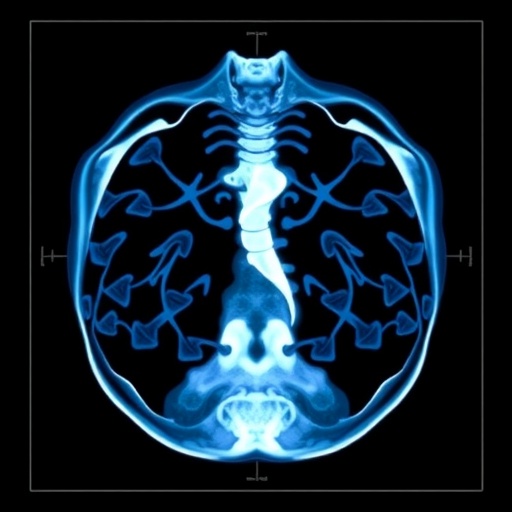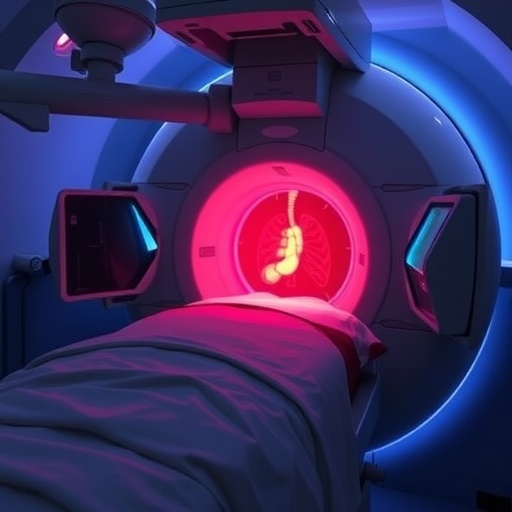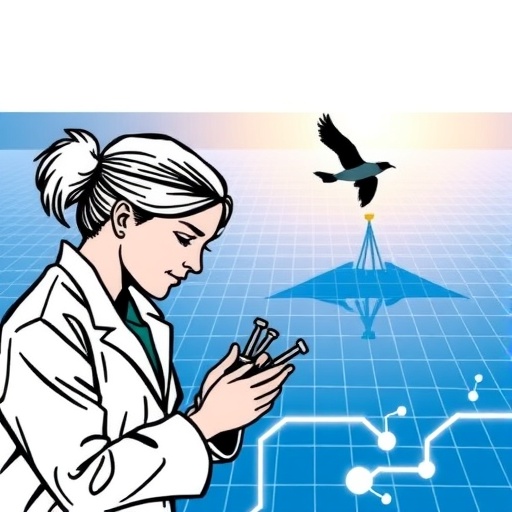PROTECT YOUR DNA WITH QUANTUM TECHNOLOGY
Orgo-Life the new way to the future Advertising by AdpathwayIn the critical moments immediately following birth, the ability to provide effective respiratory support to newborns can be the difference between life and severe long-term complications. Recent developments in neonatal care underscore the transformational impact of cutting-edge techniques designed to aid babies in breathing more efficiently as they transition from the womb to the outside world. A groundbreaking study led by V. Bhandari, soon to be published in Pediatric Research, presents comprehensive insights into innovative strategies aimed at improving neonatal respiratory outcomes in delivery rooms worldwide. This research not only clarifies existing practices but also paves the way for new protocols that can save countless infant lives.
At birth, the transition from placental oxygen supply to autonomous breathing poses immense physiological challenges. Approximately 10% of newborns require some intervention to initiate effective spontaneous breathing, and roughly 1% need extensive resuscitation efforts. The study by Bhandari meticulously examines the mechanisms underlying neonatal respiratory distress and evaluates novel respiratory support methodologies that can be applied immediately after delivery. These interventions are critical because inadequate ventilation during this delicate period significantly increases the risk of hypoxic injury, neurodevelopmental delays, and even mortality.
Central to Bhandari’s research is the exploration of non-invasive ventilation techniques that optimize lung aeration and reduce trauma associated with positive pressure ventilation. Unlike traditional intubation and mechanical ventilation, which are invasive and present risks such as airway injury and infection, less invasive methods promote physiological breathing patterns and support natural lung expansion. The analysis details the efficiency of devices such as continuous positive airway pressure (CPAP) and nasal intermittent positive pressure ventilation (NIPPV) in stabilizing infants with premature or immature lungs, thus enhancing oxygenation and carbon dioxide clearance right from the delivery room.
Moreover, the study delves into the critical importance of early and appropriate oxygen titration. While oxygen therapy remains a cornerstone of neonatal resuscitation, excessive oxygen can cause oxidative stress leading to cellular damage, particularly in premature infants. Bhandari’s data advocate for meticulous oxygen monitoring using pulse oximetry and the adoption of protocols that tailor oxygen concentrations dynamically as the newborn adapts to extrauterine life. This nuanced approach helps avoid the dual perils of hypoxia and hyperoxia, optimizing neonatal outcomes and potentially reducing the incidence of bronchopulmonary dysplasia and retinopathy of prematurity.
One of the pioneering aspects of the research is its emphasis on staff training and simulation-based education. Successfully implementing advanced respiratory support in delivery rooms hinges on the proficiency of healthcare providers. The study reveals that simulation drills which integrate the latest ventilation techniques dramatically improve the confidence and competence of neonatal resuscitation teams. This enhanced preparedness directly correlates with improved response times, reduced errors, and better adherence to evidence-based resuscitation guidelines during actual clinical scenarios.
Technological innovations also play a pivotal role in Bhandari’s recommendations. The integration of portable, user-friendly respiratory support devices equipped with real-time feedback mechanisms allows clinicians to make rapid adjustments tailored to each infant’s respiratory status. These smart devices facilitate continuous monitoring of respiratory mechanics, enabling precise interventions to enhance lung compliance and minimize ventilator-associated lung injury. The paper highlights ongoing trials testing these technologies in diverse clinical settings worldwide, anticipating their widespread adoption as standards of care.
In addressing global disparities in neonatal mortality, Bhandari’s work emphasizes scalable respiratory support solutions tailored for low-resource environments. The study reviews the adaptation of “Helping Babies Breathe” programs which utilize simplified, cost-effective devices and standardized training modules, substantially improving neonatal survival rates in underprivileged regions. By combining clinical excellence with innovations designed for accessibility, this approach represents a major leap toward equity in neonatal care.
The physiological underpinnings of neonatal respiratory distress are explored through detailed analysis of lung fluid clearance, surfactant function, and pulmonary vascular transition at birth. Bhandari describes how subtle disruptions in these processes can lead to conditions such as transient tachypnea of the newborn or persistent pulmonary hypertension. The paper elucidates how targeted respiratory support interventions enhance these natural processes, promoting timely establishment of effective gas exchange and minimizing long-term pulmonary sequelae.
The importance of multidisciplinary collaboration is strongly underscored throughout the research. Successful implementation of improved breathing support requires coordinated efforts between obstetricians, neonatologists, nurses, respiratory therapists, and biomedical engineers. Bhandari’s comprehensive framework fosters such collaboration by integrating clinical protocols, continuous education, and technology deployment, ensuring the newborn’s respiratory transition is optimized regardless of geographic or institutional differences.
Impressively, the study also examines the neuroprotective potential of early respiratory interventions. Inadequate oxygen delivery during the immediate newborn period is a leading cause of hypoxic-ischemic encephalopathy, a devastating neurological injury. By improving ventilation and oxygenation strategies, these interventions significantly mitigate brain hypoxia, preserving neural tissues critical to developmental milestones. This neuroprotection dimension adds profound clinical significance to optimizing respiratory care in delivery rooms.
Data from multicenter randomized controlled trials form the backbone of Bhandari’s conclusions, providing robust evidence supporting a paradigm shift in neonatal resuscitation protocols. The paper articulates the need for continuous quality improvement initiatives that incorporate emerging respiratory support strategies, facilitating ongoing refinement of clinical guidelines in alignment with evolving scientific knowledge. This dynamic model ensures neonatal care remains at the forefront of medical innovation.
Additionally, the study contemplates the ethical implications of advanced neonatal respiratory interventions. Decisions made in the delivery room impact not only immediate survival but lifelong health trajectories. Bhandari advocates for informed consent processes and family-centered care models that respect parental values while emphasizing transparent communication on risks, benefits, and potential outcomes of respiratory support measures.
Ultimately, Bhandari’s research represents a milestone in neonatal medicine, combining scientific rigor with practical applicability. It challenges long-standing conventions by proposing evidence-based refinements that enhance both physiological and psychological facets of newborn care. Anticipated to influence global health policies and clinical training curricula, the study offers a hopeful outlook for improving survival and quality of life among the most vulnerable patients — newborn infants struggling to take their very first breath.
As neonatal intensive care units gradually incorporate these advanced techniques, we can expect a transformative impact on neonatal morbidity and mortality rates. The promise of helping babies breathe better in delivery rooms worldwide is no longer a distant aspiration but an achievable goal, driven by science, innovation, and dedicated medical professionals. This pivotal research symbolizes a leap toward a future where every newborn receives the optimal start in life, ensuring healthier generations to come.
Article References:
Bhandari, V. Helping babies breathe better in the delivery room. Pediatr Res (2025). https://doi.org/10.1038/s41390-025-04629-2
Image Credits: AI Generated
DOI: https://doi.org/10.1038/s41390-025-04629-2
Tags: effective respiratory interventions for newbornsgroundbreaking research in neonatal interventionsimpact of respiratory support on infant outcomesimproving infant breathing at birthinnovative strategies for neonatal resuscitationneonatal care advancementsneonatal health and survival strategiesneonatal respiratory distress managementnewborn respiratory support techniquesnon-invasive ventilation for newbornspediatric respiratory care protocolstransition from womb to breathing


 6 hours ago
4
6 hours ago
4





















 English (US) ·
English (US) ·  French (CA) ·
French (CA) ·